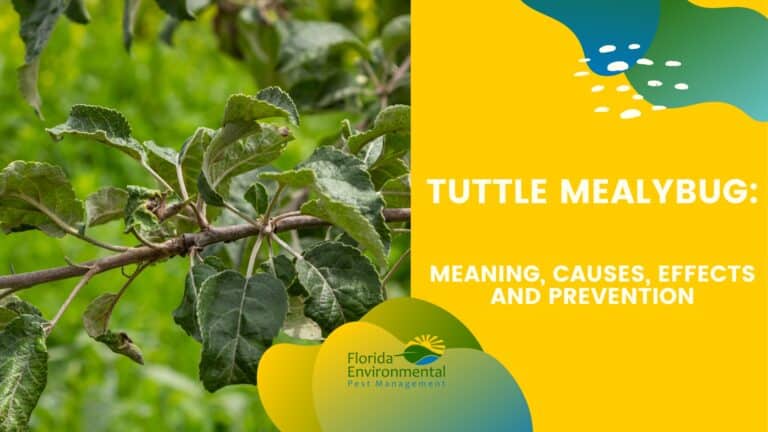Sugar Cane mosaic virus (SCMV) poses a significant threat to sugar cane crops worldwide, necessitating effective management strategies to mitigate its impact. One such approach involves the use of resistant cultivars, which can help reduce the spread of the virus and minimize yield losses.
SCMV is a plant virus that primarily affects sugar cane plants, causing characteristic symptoms such as mosaic patterns on leaves, stunted growth, and reduced sugar content in infected plants. These symptoms can vary depending on factors such as the strain of the virus and the age of the plant.
The virus is primarily transmitted through aphids and infected plant material, making it crucial to implement strict sanitation measures and pest management practices in sugarcane fields. Additionally, factors such as environmental conditions and agricultural practices can influence the spread and severity of SCMV infections.
What is Sugarcane Mosaic Virus (SCMV)?
The Sugarcane Mosaic Virus (SCMV) is a destructive pathogen first described by Brandes in 1919, causing significant economic losses in the sugarcane industry. This virus is not just a threat to sugarcane but also affects other crops in the Poaceae family. With its presence reported in approximately 80 countries spanning six continents, SCMV is a global concern, with sugarcane and maize being the primary cultivated hosts for sugarcane mosaic viruses.
SCMV belongs to a subgroup of plant viruses that cause a mosaic-like pattern on the leaves of infected plants, hence the name ‘mosaic’. This disease is also known by alternative names such as Abaca mosaic virus, maize dwarf mosaic virus strain B, and sorghum mosaic virus among other virus diseases. The virus is part of the Potyvirus genus, which is the largest genus of plant viruses, and it can cause serious damage to many agricultural crops.
The economic losses caused by SCMV are not only due to the reduction in sugarcane yield but also the increased production costs. These costs arise from the need to develop and deploy resistant sugarcane cultivars, and the additional labor and resources required for disease management. Furthermore, SCMV’s ability to infect other crops in the Poaceae family, such as maize, has broader implications for food security and biofuel production.
Understanding the structure of SCMV is crucial in developing strategies to combat this virus. The key features of the SCMV structure are:
- The SCMV genome is encapsulated within a protective protein coat
- The genome is approximately 9576 nucleotides long
- The genome encodes a large polyprotein, which is then processed into ten mature functional proteins
- One of these proteins is the coat protein, which is crucial for the virus’s infectivity and transmission
- The genetic diversity and evolution of SCMV are influenced by mutations and recombination events in its genome, with the coat protein coding region playing a critical role.
SCMV presents a significant threat to major sugarcane-producing countries, necessitating ongoing research and development of resistant cultivars. The economic impact of SCMV is seen in the reduced sugar yield and increased production costs due to the expense incurred in developing and deploying resistant sugarcane cultivars.
Understanding the Virus Structure
The SCMV is an RNA virus, meaning its genome is made up of ribonucleic acid (RNA) instead of deoxyribonucleic acid (DNA). This RNA is encapsulated within a protective protein coat, providing the virus with its structure and protecting the genetic material within. The genome of SCMV encodes a large polyprotein through a single open reading frame, which is then processed into ten mature functional proteins after cleavage at putative protease sites.
One of these mature proteins is the coat protein, which is crucial for the virus’s infectivity and transmission. Mutations and recombination events in the SCMV genome, particularly in the region coding for the coat protein, influence the genetic diversity and evolution of the virus. This genetic variability can have repercussions on disease severity, making it more difficult to control and manage.
What Are the Symptoms of Sugarcane Mosaic Virus?
The mosaic disease symptoms include distinct color variations on infected sugarcane plants, with chlorotic areas ranging from green to yellow. These patterns become more pronounced as the disease progresses.
Young plants infected with SCMV exhibit a mosaic pattern of light green to yellow patches, while mature plants may show partial reddening or necrosis. Blotchy or streaky patterns of yellow and green can be seen on the leaves of infected sugarcane, sometimes accompanied by broken yellow streaks running between veins. These symptoms are more than just cosmetic changes; they signal a decline in the plant’s health and productivity.
Infected sugarcane plants suffer a decrease in photosynthetic efficiency, which directly impacts the yield due to the disruptive effects of the virus. The loss in photosynthetic efficiency reduces the plant’s ability to convert sunlight into energy, resulting in less growth and lower sugar production. This, in turn, compromises the plant’s commercial value, leading to significant economic losses for farmers and the sugarcane industry.
From Mild to Severe Symptoms
The typical mosaic symptoms of sugarcane mosaic disease include green streaks on younger leaves and mosaic patterns, ranging from faint and irregular to pronounced streaking and patching.
As the sugarcane disease progresses, these green streaks may evolve into small chlorotic areas interspersed by green, affecting the whole leaf length. As sugarcane mosaic disease becomes more severe, the plant’s growth rate diminishes, and cane thickness is significantly reduced. Severe symptoms of sugarcane streak mosaic virus may result in substantial discoloration and necrosis of sugarcane leaves, mirroring the symptoms observed in severely affected St. Augustinegrass.
The progression of the sugarcane mosaic diseases can lead to yellowish discoloration, followed by complete reddening and premature drying of the leaves. Certain sugarcane genotypes exhibit reddening of mature old leaves as a common symptom when infected with sugarcane mosaic disease. These changes in the plant’s appearance provide visual cues for disease diagnosis, enabling timely intervention and management.
How Does the Sugarcane Mosaic Virus spread?
The spread of sugarcane mosaic virus (SCMV) occurs through several transmission routes. It is primarily transmitted by aphid vectors in a non-persistent manner, meaning the virus does not multiply within the aphid and is lost after the aphid molts or after a few hours to days.
Mechanical inoculation through sap from infected sugarcane leaves can also spread sugarcane mosaic virus. For example, if a farmer or gardener cuts an infected plant and then cuts a healthy plant without cleaning the tool, the virus can be transferred.
Sugarcane mosaic virus (SCMV) and other viruses are commonly transmitted from one sugarcane crop to the next via seed cane. This form of transmission occurs when farmers plant cane stalks from infected plants, which then grow into new plants carrying the virus.
Understanding how sugarcane mosaic virus spreads is crucial for implementing effective disease management strategies. By controlling these transmission routes, we can limit the spread of SCMV and reduce its impact on sugarcane crops.
Aphid Species as Vectors
Aphid transmission plays a significant role in spreading the sugarcane streak mosaic virus. Several aphid species, including:
- Aphis gossypii
- Myzus persicae
- Rhopalosiphum maidis
- R. padi
- Hysteroneura setariae
are known to carry SCMV. These aphids acquire and transmit the sugarcane mosaic virus in a rapid, non-persistent manner during their feeding probes on infected plants.
The efficiency of SCMV transmission can vary based on the aphid species, their feeding behavior, and their interaction with the virus and plant hosts. Winged aphids are particularly important for the spread of SCMV as they can rapidly establish new infection sites compared to their wingless counterparts.
How to Prevent the Spread of Sugarcane Mosaic Virus (SCMV)?
To prevent the spread of the Sugarcane Mosaic Virus (SCMV), it is crucial to implement proper sanitation measures and control strategies. SCMV primarily spreads through infected plant sap and mechanical means such as lawnmowers and equipment.
Therefore, to minimize transmission, it’s essential to thoroughly clean all equipment used in sugarcane fields, ensuring that clippings and sap are removed. Furthermore, avoiding the planting of virus-host crops near sugarcane fields can help reduce the risk of SCMV spread. Uprooting and burning infected plants can also mitigate the source of inoculum for vectors, thereby limiting disease dissemination.
Furthermore, considering the diversity of strains and the potential for co-infection, it’s imperative to adopt integrated management approaches, including resistance breeding in susceptible crops. Identifying resistant cultivars and implementing vector control measures can significantly contribute to SCMV management. Additionally, monitoring and early detection of infected plants can aid in prompt action to prevent further spread of sugarcane diseases.
How to Manage and Control SCMV in Crops?
To manage SCMV effectively, exploiting resistant germplasm is crucial. This involves selecting and distributing disease-resistant varieties, as modern sugarcane cultivars often have a narrow genetic base. Further, good field management practices can enhance plant resistance and minimize virus spread. Measures such as avoiding planting virus-host crops near sugarcane fields, timely removal of infected plants and weeds, and optimizing soil conditions through proper fertilization and irrigation contribute to disease control.
Chemical and biological control of aphids, which spread the sugarcane mosaic virus, can also be employed. While chemical control of aphids is not highly effective due to the non-persistent mode of virus transmission, promoting the cultivation of resistant maize varieties remains the preferred approach.
Future research may explore eco-friendly management strategies to further combat the sugarcane mosaic virus, emphasizing the importance of continuous efforts to safeguard crop health and productivity.
What are the Diagnostic Techniques for Confirming SCMV?
Diagnostic techniques for confirming the Sugarcane Mosaic Virus (SCMV) include serological and molecular methods. Serological assays like ELISA and molecular methods such as RT-PCR for accurate detection, with visual inspection of sugarcane leaves also aiding in the identification of mosaic symptoms. Serological assays rely on specific antiserum quality, while RT-PCR offers high sensitivity and specificity, crucial for distinguishing sugarcane mosaic virus from other similar viruses or conditions.
Moreover, deep sequencing techniques can provide comprehensive genomic information, enhancing diagnostic capabilities for the sugarcane mosaic virus.
Are There Any Natural Remedies for Sugarcane Mosaic Virus?
There are no known effective natural remedies that can cure lawns or plants once they have been infected with SCMV. Instead, the focus is on prevention and management strategies such as using resistant varieties and practicing good sanitation with lawn equipment to minimize disease spread.
Controlling potential host weeds for the virus in the field and surrounding areas is an organic way to manage the spread of SCMV. Encouraging beneficial insects that prey on aphids can serve as a natural biological control strategy to reduce aphid populations and limit virus spread.
Planting disease-free seeds from certified sources and avoiding physical damage and injuries to plants can help prevent mechanical transmission of the virus from infected to healthy plants. It’s worth noting that fungicides and other pesticides are not effective against SCMV, and no agronomic inputs are known that can cure the viral disease once established.
What Grass Is Resistant to Sugarcane Mosaic Virus?
Certain cultivars of St. Augustinegrass, such as ‘Palmetto’ and ‘CitraBlue’, are known to be more resistant to SCMV. Zoysiagrass, another popular type of lawn grass, does not appear to be a host for SCMV, suggesting potential resistance.
Another grass type, ‘Bitterblue’, is also suggested as resistant to SCMV and can be used as a replacement for infected lawns. The resistance of these grass varieties to SCMV can provide an effective natural defense against the virus, reducing the need for chemical interventions.
However, it’s essential to remember that resistance does not mean immunity. Even resistant varieties can become infected under certain conditions or with certain strains of the virus. Therefore, even when planting resistant varieties, it’s crucial to continue monitoring for mosaic symptoms of SCMV and implement integrated disease management practices.
What Is the Host of The Sugarcane Mosaic Virus?
The sugarcane mosaic virus primarily infects sugarcane and other Gramineae hosts, including maize, sorghum, and various grasslike plants.
What Type of Disease Is Mosaic?
Mosaic disease is a plant disease caused by various strains of several hundred viruses. It affects a wide range of economically important crops such as tobacco, cassava, beet, cucumber, and alfalfa.





